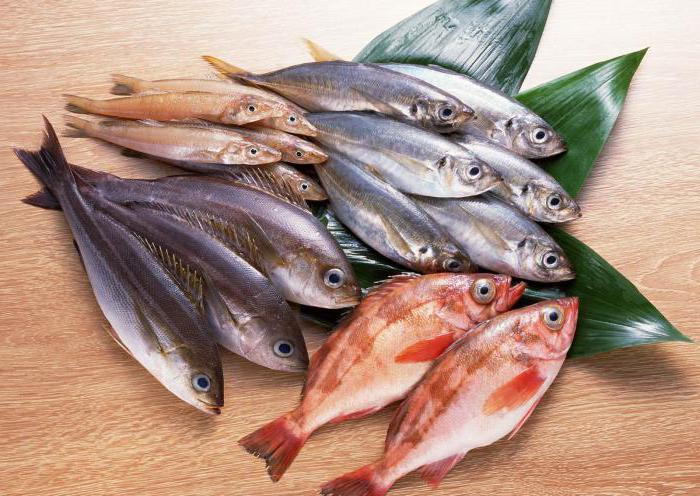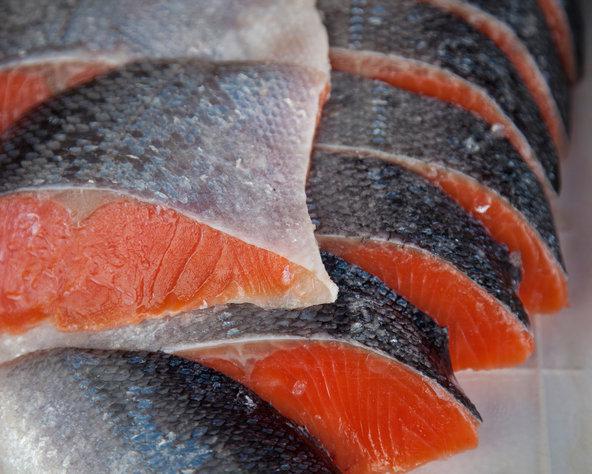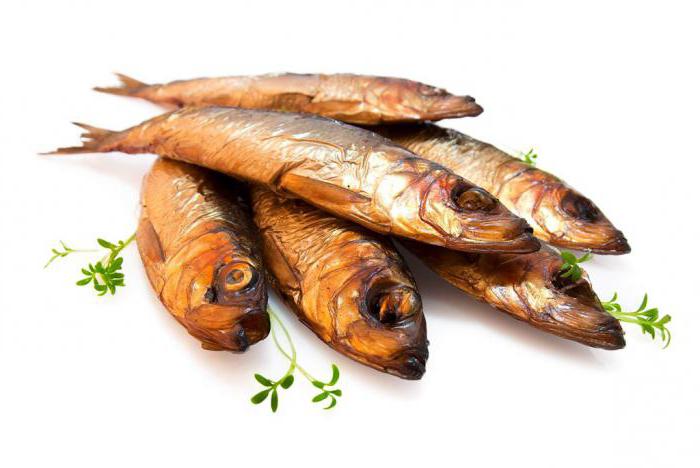Along with meat, fish has always occupied a leading place among the favorite dishes of the world's population. For peoples living near water bodies, fishing is the main business, and the main food is fish dishes, which are not only tasty, but also very healthy. However, not everyone knows that besides good, such food can also bring harm to the body.
Which is better - river or sea fish? The benefits and harms of consuming this product - what are they? What dishes can be prepared from fish? We will try to answer these and other questions in the article.
Structure

It is believed that the protein found in fish is much better absorbed than the proteins found in foods such as eggs or meat. An important component in the composition of fish, so necessary for the human body to build proteins, is amino acids. The composition of fish contains vitamins PP, H, D, A, vitamins of group B, a small amount of vitamin C. The trace elements that make up the fish: phosphorus, iron, manganese, zinc, molybdenum, magnesium, potassium, bromine, fluorine, copper, calcium . Since fish contains a large amount of iodine, it is used in the treatment and prevention of thyroid diseases. Its fat contains a large amount of omega acids, so fatty fish is especially appreciated.
Benefit and harm

Fish meat and caviar are popular among obese people. The high protein content contributes to weight loss, so fish is an excellent product on the menu of many diets. However, it should be remembered that as a dietary component, dishes containing low-fat varieties are suitable, such as: bream, hake, perch, pollock, navaga, pike.
The benefits of fish are as follows:
- fat metabolism normalizes;
- the appearance of the skin, teeth, hair and nails improves;
- cartilage and bone tissue are strengthened;
- blood cholesterol is reduced;
- reduced risk of diabetes, thyroid disease, heart disease;
- the immune system is strengthened;
- improves brain function and overall well-being;
- aging slows down;
- depression goes away.
In addition to the positive effect, the use of this product can have harmful and even dangerous consequences, starting with the deterioration of well-being and ending with severe poisoning. If the fish is stored for a long time, numerous parasites and harmful substances can accumulate in it. Therefore, you should be careful about buying fish in markets, shops and supermarkets.
Today, environmental pollution is detrimental to the quality of water in reservoirs, and the toxic substances emitted by factories and factories destroy beneficial properties, and the benefits of fish are being called into question. The purest varieties in which the content of toxic substances is the lowest: salmon, sea bass, tuna, trout, scallop, sardine, halibut, herring, cod, catfish.
How to identify poor-quality and unfit food fish?
1. First of all, you need to pay attention to the gills and eyes. The gills should be red, the eyes clear, red. If the fish is spoiled, the gills become brown and gray.
2. The mucus on the skin and scales should not have an unpleasant odor and a yellowish tint.
3. When you click on the body of the fish should not remain a dent.
4. The pulp should not be loose.
5. If the belly is yellow, this indicates that the fish is rotten.
6. The presence of uneven build-ups of ice suggests that the fish was more than once susceptible to freezing.
There are times when the seller, under the guise of one kind of fish, is trying to sell a completely different one, so buyers need to know the distinguishing features of some varieties.
When choosing fish, you should pay attention to the size of the product: in small-sized fish, as many microbes and parasites do not have time to accumulate as larger fish absorb.
In order not to fall for the bait of deceiving fish products distributors, it is best to cook fish dishes at home.
River fish

River fish and dishes from these varieties are very popular. River fish species include: river trout, silver carp, bream, pike perch, carp, grass carp, pike, crucian carp, catfish, czech, asp.
This product contains many healthy and nutritious substances. Eating river fish will strengthen blood vessels and help cope with skin diseases. Due to its low calorie value, river fish is ideal for cooking dietary dishes. The benefits and harms of the product should be known to everyone.
So, you need to know that there are a lot of small bones in river fish, you should use it with caution, especially for children. Due to its short shelf life, it is recommended to buy still live.
Red fish

Sea fish is considered a noble meal. It is divided into red and white. White include: salmon, whitefish, flounder, haddock, pollock, hake. Red is a fish of the sturgeon family: pink salmon, chum salmon, trout, salmon, sterlet, beluga, sturgeon, stellate stellate.
The favorite dish of many is sea fish. Its benefits are undeniable. Red varieties are considered to be especially rich substances valuable to the human body. Among their beneficial properties, the presence of omega-3 fats is highlighted. This is the so-called beneficial cholesterol, the use of which not only strengthens blood vessels, the immune and endocrine systems, but also prevents bone and cartilage diseases - osteochondrosis, arthritis and arthrosis - and even oncological diseases. Omega-3 increases the body's resistance to ionizing radiation, so people who eat red fish can safely sunbathe in the sun without risking a burn or sunstroke. The benefit of red fish is that its use in food helps to maintain vision, and the view is made more clear. Omega-3 fats accelerate brain activity, improve attention and memory. Selenium, as well as vitamins A, D, have the action of natural antidepressants and protect the nervous system. The beneficial substances of red fish help maintain the functioning of the heart muscle, stomach and gastrointestinal tract.
Smoked fish

Smoking has become a popular way of cooking not only fish, but also cheese, meat, etc. Many people like smoked fish. The advantage of this processing method is that it allows to extend the shelf life of products. Smoke for smoking not only gives them a smell, but also qualitatively preserves them and protects them from harmful bacteria. When smoked, the fish is not enriched with harmful fats, and the beneficial properties are fairly well preserved. Cold smoking is more gentle, because when heated, some substances needed by the body disappear.
Along with the positive properties of smoking, there are also negative ones. So, the smoke that processes fish can contain substances that cause cancer, which is why this problem prompted technologists to invent liquid smoke. It is not as harmful to the body as usual. It should be said that products that have undergone liquid smoking are inferior in taste to processed hot ones.
Herring

This is one of the most beloved products that decorates any table - both dining and festive. The advantage of fish is that the herring has a low calorie content and contains many useful substances: vitamins of groups B, E, A, D, trace elements (iron, potassium, magnesium, iodine, phosphorus, calcium), polyunsaturated acids (Omega-3). The use of this product has a beneficial effect on the thyroid gland, lowers blood cholesterol. However, herring, especially very salty, should not be abused, because salt retains water in the body and disrupts the functioning of all organs: blood pressure rises, heart rate accelerates, kidneys and blood vessels suffer, and swelling appears.
Fish Recipes: Braised Trout
Stewing is the cooking method in which beneficial substances are preserved, in addition, this dish is suitable for diabetics and those who want to lose weight, so the benefits of fish cooked in this way are undeniable.
Cooking:
- wash and clean 2 pcs. trout, get rid of the insides, gently rub with salt;
- Peel 2 onion heads and 2 carrots, cut into cubes or slices;
- greens - parsley and celery - chop, but not too finely;
- add vegetables to a shallow pan, add salt and 15 pcs. black pepper peas, put fish on top, pour white wine and olive oil;
- cook under a closed lid on low heat for about 40 minutes, after putting the fish on a dish;
- strain the fish sauce remaining in the pan, add 40 g of butter, egg white and mix quickly;
- Pour the sauce over the fish and serve.
Ear
Any river fish is suitable for fish soup, but now that the benefits of red fish are known, while preparing traditional fish dishes, white fish is increasingly replaced with it.
Cooking:
- it is necessary to throw 200 g of pre-cleaned fish and a bulb head in 2 l of boiling and salted water;
- while the fish is boiling, peel 2 potatoes and half a carrot, cut;
- put the finished fish on a plate and cover;
- in a boiling fish broth toss potatoes and carrots, cook until half cooked, pour 80 g of millet;
- 5 minutes before being ready to drop bay leaf, 2-3 peas of allspice and on the tip of a ground knife into the pan;
- when the ear is cooked, add chopped greens (onions, parsley, dill).
Homemade herring
- To pickle herring at home, you first need to make a marinade: add 2 tsp to water (2 cups). salt, 1 tsp sugar, 5 peas of allspice and bitter peppers, 1 bay leaf, 5 pcs. clove seeds. Bring to a boil, cool.
- After that 2 pcs. wash fresh herring, peel, get rid of the insides, cut gills, cut fins, tails.
- Cut the herring into pieces, put in a jar or a deep, but not wide dish, pour the marinade.
- Refrigerate for 1.5-2 days.